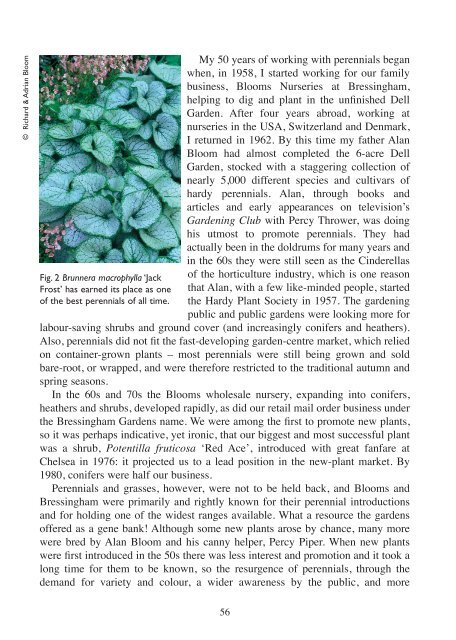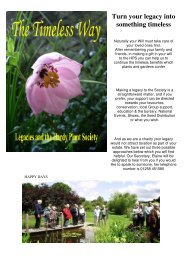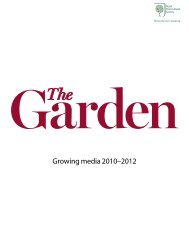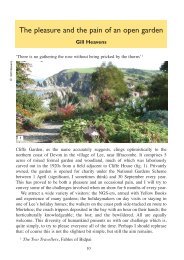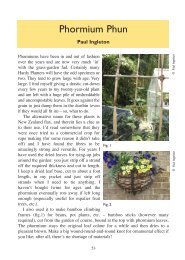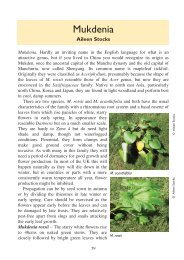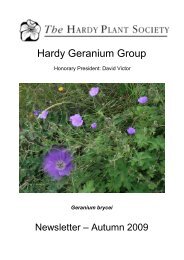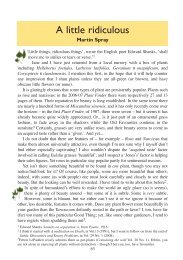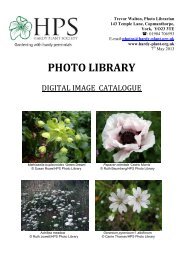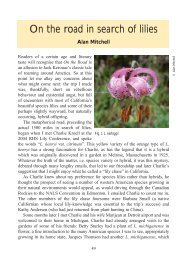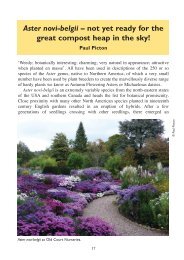012 adrian bloom - Hardy Plant Society
012 adrian bloom - Hardy Plant Society
012 adrian bloom - Hardy Plant Society
You also want an ePaper? Increase the reach of your titles
YUMPU automatically turns print PDFs into web optimized ePapers that Google loves.
© Richard & Adrian Bloom<br />
Fig. 2 Brunnera macrophylla ‘Jack<br />
Frost’ has earned its place as one<br />
of the best perennials of all time.<br />
My 50 years of working with perennials began<br />
when, in 1958, I started working for our family<br />
business, Blooms Nurseries at Bressingham,<br />
helping to dig and plant in the unfinished Dell<br />
Garden. After four years abroad, working at<br />
nurseries in the USA, Switzerland and Denmark,<br />
I returned in 1962. By this time my father Alan<br />
Bloom had almost completed the 6-acre Dell<br />
Garden, stocked with a staggering collection of<br />
nearly 5,000 different species and cultivars of<br />
hardy perennials. Alan, through books and<br />
articles and early appearances on television’s<br />
Gardening Club with Percy Thrower, was doing<br />
his utmost to promote perennials. They had<br />
actually been in the doldrums for many years and<br />
in the 60s they were still seen as the Cinderellas<br />
of the horticulture industry, which is one reason<br />
that Alan, with a few like-minded people, started<br />
the <strong>Hardy</strong> <strong>Plant</strong> <strong>Society</strong> in 1957. The gardening<br />
public and public gardens were looking more for<br />
labour-saving shrubs and ground cover (and increasingly conifers and heathers).<br />
Also, perennials did not fit the fast-developing garden-centre market, which relied<br />
on container-grown plants – most perennials were still being grown and sold<br />
bare-root, or wrapped, and were therefore restricted to the traditional autumn and<br />
spring seasons.<br />
In the 60s and 70s the Blooms wholesale nursery, expanding into conifers,<br />
heathers and shrubs, developed rapidly, as did our retail mail order business under<br />
the Bressingham Gardens name. We were among the first to promote new plants,<br />
so it was perhaps indicative, yet ironic, that our biggest and most successful plant<br />
was a shrub, Potentilla fruticosa ‘Red Ace’, introduced with great fanfare at<br />
Chelsea in 1976: it projected us to a lead position in the new-plant market. By<br />
1980, conifers were half our business.<br />
Perennials and grasses, however, were not to be held back, and Blooms and<br />
Bressingham were primarily and rightly known for their perennial introductions<br />
and for holding one of the widest ranges available. What a resource the gardens<br />
offered as a gene bank! Although some new plants arose by chance, many more<br />
were bred by Alan Bloom and his canny helper, Percy Piper. When new plants<br />
were first introduced in the 50s there was less interest and promotion and it took a<br />
long time for them to be known, so the resurgence of perennials, through the<br />
demand for variety and colour, a wider awareness by the public, and more<br />
56


